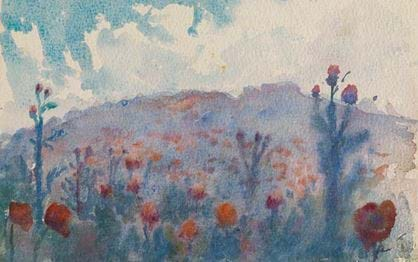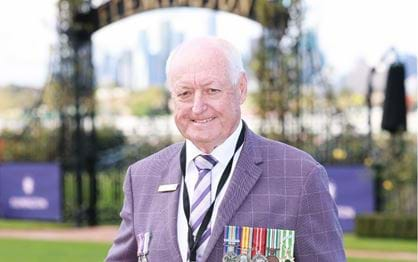At just twenty-two years old, John Simpson Kirkpatrick’s journey from an English-born trade union activist to a national hero is one of Australian history's most unlikely tales of heroism. His path, marked by desertion from the merchant navy and a transient life across Australia, led him to enlist in the Australian Imperial Force (AIF), hoping to return to England. However, fate intervened, and on April 25, 1915, Private Simpson found himself at the shores of Anzac Cove, where his life would be cut short less than four weeks later.
In August 1914, he enlisted in the AIF and served at Gallipoli the following year as Private John Simpson in the 3rd Field Ambulance, Australian Army Medical Corps. Tasked with helping to recover and help the wounded as a stretcher-bearer, Simpson threw himself into the work. Despite facing deadly sniping and fierce shrapnel fire, he bravely used the donkeys brought in for carrying water to transport wounded men day and night from Monash Valley to the beach at Anzac Cove. Tragically, he was killed by machine-gun fire on May 19 while carrying two wounded men and was laid to rest on the beach at Hell Spit.
His bravery, immortalised in a bronze statue by Peter Corlett as Simpson and his donkey, swiftly emerged as a symbol of Australian resilience and determination amidst the trials of Gallipoli.
Simpson’s selfless acts left an indelible mark on the Anzac legend. Across generations, his story of compassion and sacrifice has been recounted to Australian schoolchildren, embodying the spirit of mateship and solidarity that defines the nation’s identity.
One of those schoolchildren was Rob Kirkpatrick, 55, a picnic jockey from Benalla who always knew there was a family link to the war hero. “We all thought that John Simpson was my grandfather’s cousin, and knew he was a Kirkpatrick even though he didn’t use the name. It wasn’t until my niece was looking at the family history through a school project that we discovered that he was in fact Jack Kirkpatrick, the son of my great-grandfather, who was in merchant shipping. It turns out my great-grandfather was leading two lives, with a wife and son in England, as well as a family back in Australia!”
It is speculated that John Simpson may have dropped his real surname to avoid being identified as a ship deserter, therefore using his mother’s maiden name instead of Kirkpatrick.
“Even when I went to Canberra as a 13-year-old on a school trip and visited the Australian War Memorial, I knew he was a relative,” said Rob Kirkpatrick. “We’ve always been proud to tell his story, and every Anzac and Remembrance Day I try to donate as much money as I can, and my brother Craig, also a jockey, laments each year. I have another brother in Townsville who spent 20 years in the army as a motor mechanic, so it’s a cause close to our hearts.”
Kirkpatrick, who describes his job as “riding horses for a living” has been on the back of the animals as long as he can remember. “Dad had horses and was a farrier by trade, so my earliest memory is of being on a horse before I was four years old. I grew up just wanting to be on top of one or underneath one, which my family didn’t like.”
But Kirkpatrick was determined and soon qualified as a farrier just like his father, as well as riding at any chance he got.
“Ever since Dad threw me on the back of a horse, I’ve loved it. I pretty much always have work because I’m happy to take the more difficult rides. I think I have a natural ability and a way with horses, which I combine with years of experience and what I have learned from every trainer I’ve ever worked with.”
An innate understanding of the horse is also his secret, including the ability to stay calm. “Horses can sense your aura, so I always tell young kids – like a girl I mentor – to relax. When you are relaxed, the horse is, too, and will do what you ask.”
Perhaps the gift of connecting with animals runs in the family, inherited from his great-uncle John, who formed an extraordinary bond with his donkeys, as together they aided numerous wounded soldiers during the Gallipoli campaign. These remarkable deeds cemented his place in history, elevating him to the status of a legend and hero of Gallipoli.
Did you know?
In 1987 Sculptor Peter Corlett won a competition to design a memorial to commemorate Private John Simpson Kirkpatrick. His statue portrays a calm and resolved Simpson helping a wounded soldier, mounted on a donkey, on the dangerous journey to an aid post. Simpson and his donkey was installed in the Memorial sculpture garden at the Australian War Memorial in 1988. Corlett also sculpted the famous Phar Lap statue at Flemington (1988) that stands proudly at the members’ entrance to the racecourse. In 2000 the VRC also commissioned him to create a likeness of the legendary Bart Cummings.



